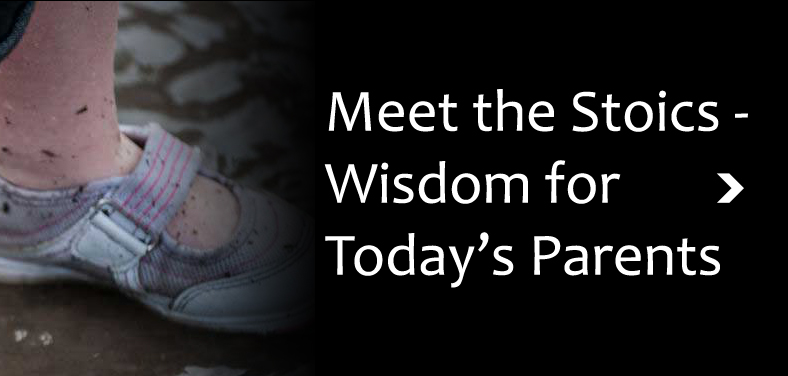The Stoic Practice contained two main techniques: “drills and conditioning” to get your mental muscles in shape for when you need them and “real-time consultation with Tiny Invisible Socrates.”
The idea of the little robed Yoda is a short cut for a constant practice of self-questioning and self-awareness to change habits. In the case of parenting, there is a “simple short cut” that is also consistent with mindfulness practices and the early childhood approach of Emmi Pikler and Magda Gerber.
Quite simply, over-simply, Stoicism is a series of habits related to letting your logical mind understand a situation, rather than simply responding to your emotions. While there are several specific techniques recommended (mostly a quick inner dialog to confirm your understanding) there is, as they say in clickbait, “one simple shortcut” –one simple habit:
Start by stopping.
When we see trouble from our near our child, our first response comes with an automatic exhale: “No!” or “Stop” or “What are you doing?” We respond right away, by … responding.
Instead, always inhale first. There is no problem with your child that pausing a few seconds won’t help you do better with. So … Stop Yourself!
When you exhale and exclaim you often lunge forward, at the child. You are in action already, without thinking, or noticing.
When you inhale you pull up. You have a moment to look around, to assess the situation. In the event of a real emergency, you’re buying an extra second or two to understand the situation, and to see who else is there who might help you.
Practice inhaling first, before responding – even (or especially) if it is a small issue. That habit, deep breath first, before responding, will always help you. You will get used to a different pace – one with space for response for your higher and best parenting self – similar to the way you will learn to allow space for your child to respond during “serve and respond” exchanges.
Most of the time, your child’s sudden need is not a life-or-death situation where you must swoop in immediately to save them. Usually there is a surprise – often a bad surprise – which is an opportunity for learning.
When you lunge for your child saying “Mommy’s here are you alright? You are alright. What happened? Mommy’s here….” You aren’t actually helping your child, at all.
When you take your time, you can see the situation more clearly, and make a choice about how you are going to deal with it, rather than just going with your protective and reactive instincts. You can be there, and help your child understand what happened. Then, the accident or problem is about your child, and what happened to her, not about you and your instinct to jump in a protect.
So with young children, “Stop and take a deep breath” helps with managing the daily bumps that are part of growing up. What about older children?
When your innocent middle-schooler says “We are taking an Uber to some party with these kids Kirsten met at a club” it’s great to have your “Inhale first” habit. You won’t be accused of stalling or being mean or negative if you always pause before you respond – that deep breath gives you a chance to start a conversation, rather than just saying “No. No No No.”
When you take a deep breath, you shoulders fall back, your heart comes up and forward – you stand on your center. You’re ready, you feel ready, and others can see that you are ready.
You are the captain. Don’t go with your first, automatic response. Take your time, every single time. Try to always take a deep breath,
or two ….
then respond.





Add comment